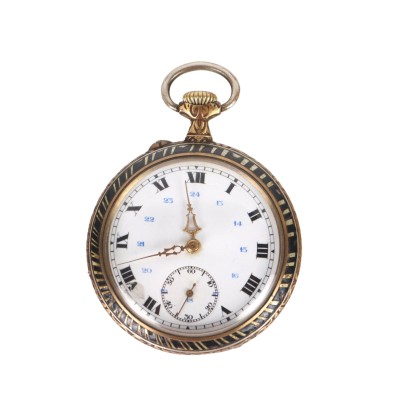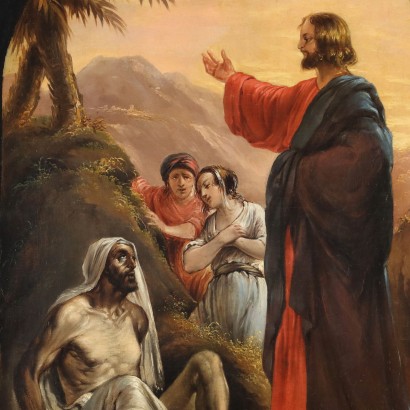Table Portico Clock Maple Bronze Alabaster 19th Century
Features
Style: Bourbon Restoration (1815-1830)
Age: 19th Century / 1801 - 1900
Main essence: Maple
Material: Alabaster , Bronze , Gilded Wood , Metal
Description
Portico clock, maple. The base of the clock is supported by circular bone feet with alabaster columns. Sculpted and gilded wood embellished with applied bronze ornaments. The mirrored front creates a depth and width effect. Mythological figures and volutes with leaves on the sides. On the top of the clock a sculpted gilded eagle. Glazed metal face with Arabian numbers covered with bent glass. 19th century.
Product Condition:
Object in good condition. Wear consistent with age and use. Not revised mechanism.
Dimensions (cm):
Height: 69
Width: 38
Depth: 14
Additional Information
Style: Bourbon Restoration (1815-1830)
Starting from the Congress of Vienna in 1815, the arts also expressed the return to monarchical order and the desire for order after the years of war.The stylistic characteristics are an evolution of the Empire style, but with simpler lines and stripped of the typical symbols of the Napoleonic period.
There is greater attention to the practicality of the furniture and domestic use.
Find out more with the insights of our blog and FineArt on the Restoration style:
The return to the past in the Restoration period
Gueridon Restaurazione
INSERT ADDITIONAL LINKS
Austrian taste for Baroque
The history of French furniture
Age: 19th Century / 1801 - 1900
19th Century / 1801 - 1900Main essence: Maple
Hard, light wood used for inlays. It grows mainly in Austria, but it is widespread throughout the northern hemisphere, from Japan to North America, passing through China and Europe. It is one of the lightest woods ever, tending to white, it is similar to lime or birch wood. The briar is used in the production of ancient secretaires .Material:
Alabaster
Bronze
Gilded Wood
Metal
Other customers have searched:
Orologi, orologio dorato, orologio da camino, orologio da appoggio, orologio da tavolo, trittico, pendola, parigina..
Vuoi conoscere di più sugli orologi? Consulta i nostri articoli del blog e di FineArt che ne parlano:
Leggi di più
Le lancette degli orologi ci insegnano cos'è il traforo
Cartel Barat a Paris Orologio in bronzo dorato
Orologio Phippard Japanned Longcase, secondo quarto XVIII secolo Orologio a torre
Trittico con orologio e coppia di candelabri, Etienne Lenoir – Henry Dasson, Francia, seconda metà XIX secolo
Orologio Impero da appoggio
Orologio “Carro di Telemaco”
Orologio da mensola, Camillo Borghese, Torino, 1808 – 1814
Orologio a Vaso, Francia, Primo Quarto XIX Secolo
Orologio Impero a pendolo “Pegaso e Perseo” Lesieur à Paris, 1815 ca.
Leggi di più
Le lancette degli orologi ci insegnano cos'è il traforoCartel Barat a Paris Orologio in bronzo dorato
Orologio Phippard Japanned Longcase, secondo quarto XVIII secolo Orologio a torre
Trittico con orologio e coppia di candelabri, Etienne Lenoir – Henry Dasson, Francia, seconda metà XIX secolo
Orologio Impero da appoggio
Orologio “Carro di Telemaco”
Orologio da mensola, Camillo Borghese, Torino, 1808 – 1814
Orologio a Vaso, Francia, Primo Quarto XIX Secolo
Orologio Impero a pendolo “Pegaso e Perseo” Lesieur à Paris, 1815 ca.












































